.jpg) |
COMTHIRDFLEET
Assistant Air Training Officer Ford Island, Oahu, Hawaii May 1979- December, 1980 Last Updated: March 20th, 2024 |
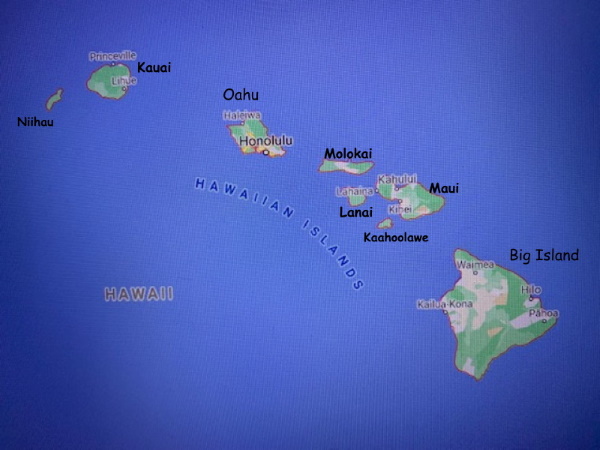 Map of the Hawaiian Islands
|
 Map of Oahu
|
Ford Island in 1941
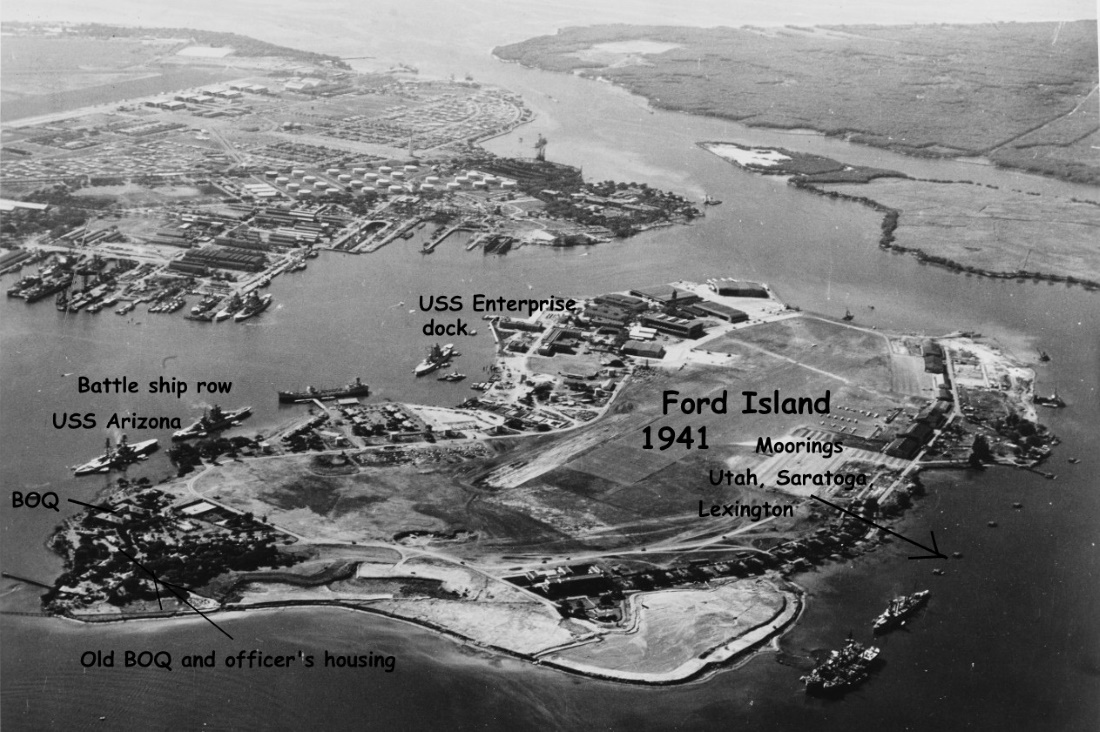 |
Ford Island- Present
 |
When I checked in to
Third Fleet Headquarters on Ford Island, I learned
that I would be required to live in officer's housing
on Ford Island but that there would be wait of about
60 days before we could move in to our government
quarters on the island. We would have to spend that
time at a hotel at Waikiki. While in Waikiki, I took
some leave for a about a week or so then started
started taking the ferry to work to start training
with my boss, CDR Barry Kunkel. Cathy and I had a
great Hawaii vacation for awhile until we finally
moved in the our quarters on Ford Island.
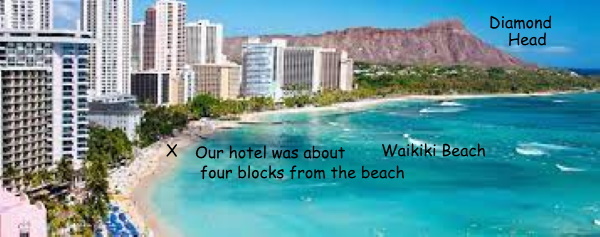 |
During the day, we could go to Waikiki Beach, snorkel at Hanauma Bay, or drive to the North Shore and enjoy the waves or check out a rainbow!
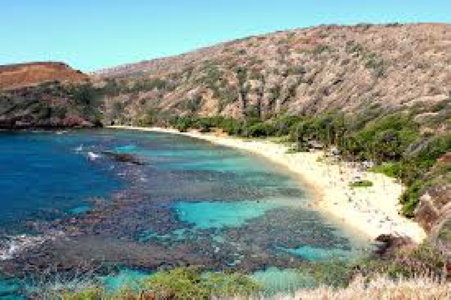 Hanauma Bay
|
 North Shore
|
At night, we had dinner in a different restaurant every night and would check out places like the International Village.
 |
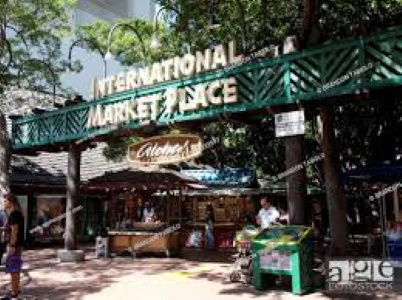 |
Ford Island- 1979/1980
When
we moved to
Ford Island
1979, it
looked more
like the Ford
Island of 1941
than the Ford
Island of
today.
There was no
bridge from
Oahu to Ford
Island. The
only way to
travel to and
from Ford
Island before
the bridge was
built in the
1980s (other
than by air),
was by a
ferry.
Ford Island was
restricted to military personnel, their families. and
invited guests 1979 before the bridge was built from Oahu to
the island in the 1980s.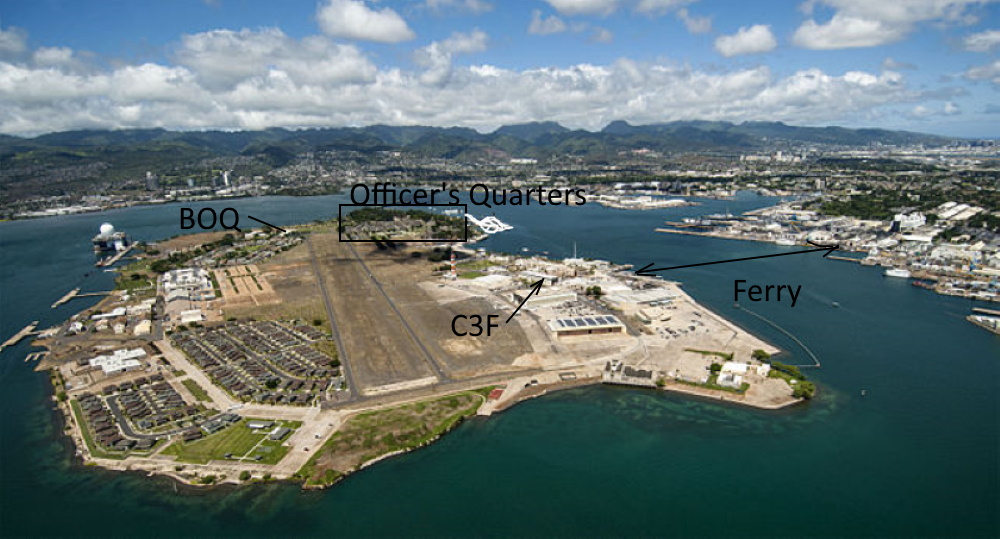 |
 |
So basically Ford Island was our private island for those who worked and lived there. We walked, ran, or rode a bike to and from work. We had tennis courts and a swimming pool and we had a bar and food service at the small BOQ on the island. We had cars but normally didn't use them while on the island. When we wanted to go off-island, we put our cars on the ferry for trips to the commissary, naval exchange, hospital, or to go out to dinner or travel on Oahu. |
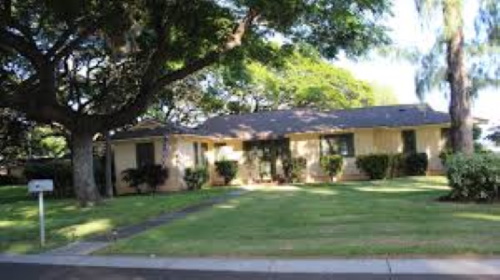 |
This was not our quarters. But, it looks a lot like ours. We had three bedrooms and two baths and a very nice lanai that faced Pear Harbor. We had a rim of coconut palm trees that lined our backyard toward the trade winds which came across the harbor. |
Unfortunately,
all my
personal
pictures from
Hawaii were
destroyed in a
flood.
I have located some new pictures which I will include in the rest of this memoir.
I have located some new pictures which I will include in the rest of this memoir.
The Mission of COMTHIRDFLEET (C3F) in 1979/1980
The mission of Third Fleet in 1980 was a complex issue. From my perspective and according to Wikopedia, the C3F mission 1979/1980 was to provide air services to naval forces located in Hawaii and for Carrier Battle Groups transiting through the Hawaiian operating area from the West Coast on deployments to the Western Pacific. My job as Assistant Air Training Officer was to work with my boss, the Air Training Officer (CDR Barry Kunkel) to provide air services for fleet units to accomplish this mission. In addition, we were also involved in the planning Fleet Exercises for west coast carrier battle group and amphibious group training.
But recently, I have become aware that in 1979/1980, there was also a second group within the C3F staff that were involved in an entirely different mission. This group was attached to the CINCPACFLT and COMSUBPAC staffs and operated out of the CINCPACFLT compound on Oahu. This group was involved with the tracking of Soviet nuclear ballistic missile submarines in the Pacific theater of operations. In the 1970s and 1980s, the Soviets were deploying their Yankee Class nuclear ballistic missile submarines in the central and eastern Pacific Ocean. The specifics of US Navy counter Soviet ballistic missile submarines was and continues to be highly classified. As a result, I was never involved in any aspects of these operations. I suppose that it was important for C3F to be aware of the presence of any Soviet ballistic missile submarines that might be located with our Hawaian Operating Area during our battle group transit exercises.
In the 1979s and 1980s, the Soviets were also deploying nuclear attack submarines in the central and eastern Pacific. The mission of these submarines was to locate and track US Navy carrier battle groups and presumably conduct offensive anti carrier battle group missions if directed to do so. So as a result, part of the C3F mission was to work with the CINCPACFLT and COMSUBPAC staffs to keep track of these Soviet nuclear attack submarines. I was not involved in these operations either except in one instance when one of these Soviet nuclear attack submarines decided to get involved in one of our carrier Battle Group transit exercises.
During the transit of one of our battle group transits, a Soviet nuclear attack submarine was attempting trail the aircraft carrier. I was able to figure out how that submarine was detected and it's location passed from Barber's Point P3B aircraft to carrier ASW (anti-submarine warfare) aircraft. Eventually the sub's exact location was passed to one of the carrier's ASW helicopters which achieved a attack position on the sub.
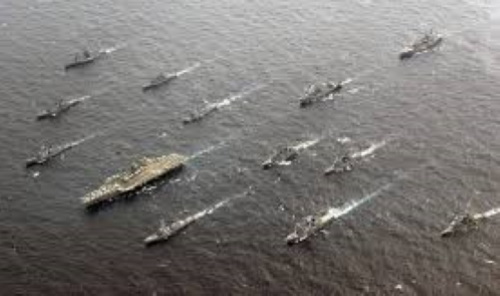 |
A significant part of the job was to organize a Schedule of Events (SOE) for transit exercises, fleet exercises, and a Rim of the Pacific (RIMPAC) exercise and to provide air services and Orange Force opposition for these exercises. Learning how to produce an SOE was exceptionally valuable for me in subsequent tours of duty. |
Flight
Time
I
didn't start
flying right
away after
reporting for
duty. I had to
learn about my
job first and
then had to
requalify in
the A4 before
I could fly
with VC1 at
Barber's
Point. The
opportunity
came when I
was part of
the planning
for air
services from
NAS Whidby
Island near
Seattle,
Washington for
a Fleet
Exercise which
took place at
the end of
September/early
October 1979.I left Ford Island and flew to San Diego to get my requalification in the TA4J with the VF-126 Fighting Seahawks at NAS Miramar
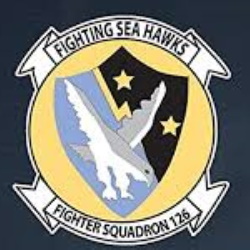 |
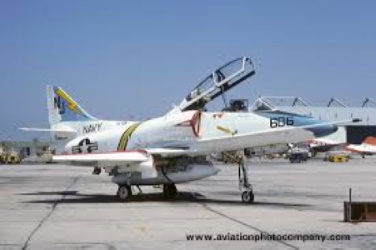 TA4J
|
I
flew five
flights with
VF-126; one
flight was a
spin training
flight in the
T2A on
September13th
and four
flights in the
TA4F (6.6
hours)
from
September 14th
through
September
26th.
Orange Forces Intelligence Support
After completing my check ride with VF-126 on September 26th, I checked in with VC-7 to start flying in support of Exercise Kernal Potlach which was part of the larger Fleet Exercise. My first flight was on September 28th and was an exceptionally interesting flight.
I took off early in the morning. The first part of the flight was to Beale AFB in northern California were I picked up some surveillance film which had been flown by a U2 surveillance aircraft.
I handed the U2 surveillance photos showing the composition of Blue Naval Forces (good guys) to a staff officer of the Royal Canadian Navy Orange Forces (bad guys). I was in charge of providing air services (opposition Orange Force air services) for the Fleet Exercise. After delivering the intelligence photography, I got back in to my trusty TA4 and flew south to NAS Whidby Island, the home base of the Orange air services. I landed just after sunset (.3 hours night flight time). Only 4.1 of flight time (all first pilot time) (3 flights) spread over a long but very interesting day.
VC-7
Orange Forces
Flights from
NAS Whidby
IslandOrange Forces Intelligence Support
After completing my check ride with VF-126 on September 26th, I checked in with VC-7 to start flying in support of Exercise Kernal Potlach which was part of the larger Fleet Exercise. My first flight was on September 28th and was an exceptionally interesting flight.
I took off early in the morning. The first part of the flight was to Beale AFB in northern California were I picked up some surveillance film which had been flown by a U2 surveillance aircraft.
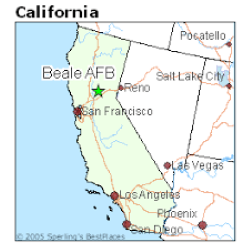 |
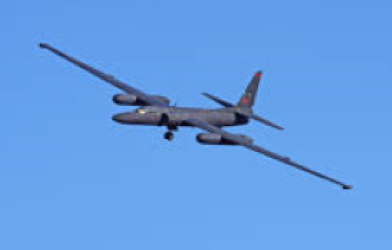 |
 |
After
I landed my
TA4 at Beale
AFB, I was
driven to the
airfield in a
USAF blue
staff sedan.
We watched the
U2 land and
then took the
runway and
drove along
side the U2.
Toward the end
of the U2
landing roll
out, ground
crew members
took station
on each wing
tip to make
sure neither
wing tip
touched the
concrete.
After a few
hours, I was
handed a
package that
contained
surveillance
photos taken
by the
U2. I
got back in my
trusty TA4 and
flew to
Esquimalt
British
Columbia.
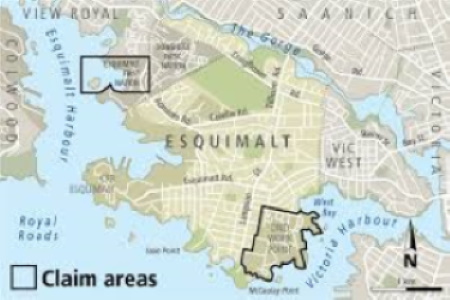 Esquimalt
British
Columbia
|
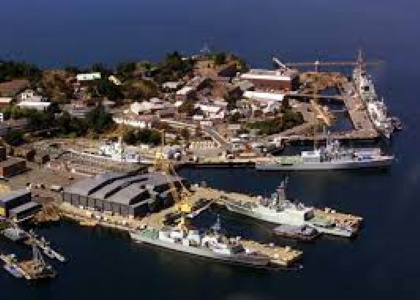 Esquimalt
was a Royal
Canadian Navy
Base
|
I handed the U2 surveillance photos showing the composition of Blue Naval Forces (good guys) to a staff officer of the Royal Canadian Navy Orange Forces (bad guys). I was in charge of providing air services (opposition Orange Force air services) for the Fleet Exercise. After delivering the intelligence photography, I got back in to my trusty TA4 and flew south to NAS Whidby Island, the home base of the Orange air services. I landed just after sunset (.3 hours night flight time). Only 4.1 of flight time (all first pilot time) (3 flights) spread over a long but very interesting day.
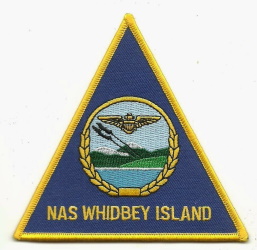 |
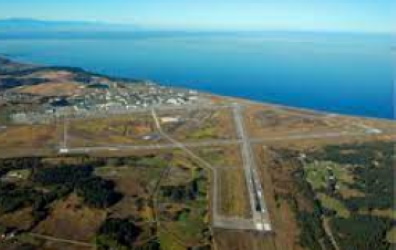 |
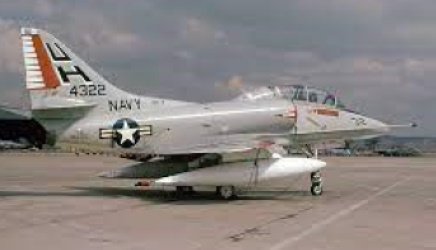 VC-7
TA4J
|
 |
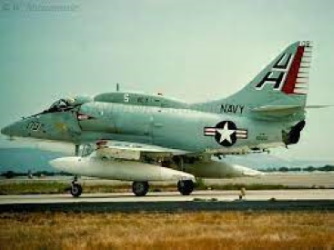 VC-7
A4F
|